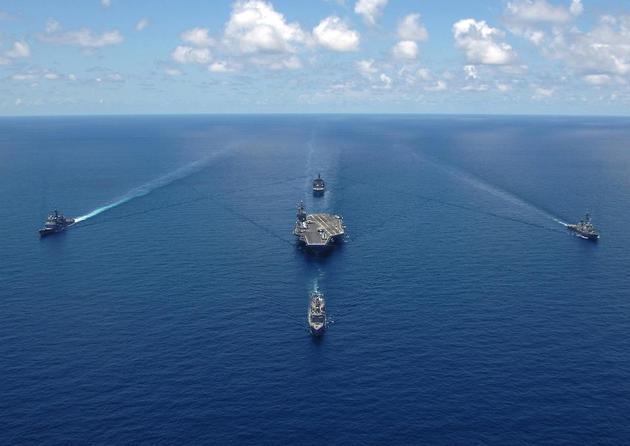Congressional Research Service quotes US commanders saying Chinese anti-ship ballistic missiles can now hit moving targets.
Asia Times reports that a March 8 Congressional Research Service (CRS) report on China’s naval capabilities cites the view of top US commanders that China’s arsenal of anti-ship ballistic missiles (ASBMs) can hit moving targets, effectively closing an area a thousand miles from China’s coast to the American Navy.
The report states: “A December 3, 2020, press report stated that Admiral Philip Davidson, the commander of US Indo-Pacific Command, ‘confirmed, for the first time from the US government side, that China’s People’s Liberation Army has successfully tested an anti-ship ballistic missile against a moving ship.’ China reportedly is also developing hypersonic glide vehicles that, if incorporated into Chinese ASBMs, could make Chinese ASBMs more difficult to intercept.”
Some of the assessments by senior US flag officers have been cited before, but the CRS report gives them additional weight in the context of an overall assessment of Chinese capabilities.
If Chinese missiles can effectively clear the coast of American vessels to a distance of 1,500 kilometers or more, the United States has no effective way of defending Taiwan against a prospective Chinese armed landing.
Some US analysts, e.g., Strategy of Denial author Elbridge Colby, propose laying mines in the Taiwan Strait, or equipping Taiwan with large numbers of ground-based anti-ship missiles. Preparations of this kind, though, would invite Chinese pre-emption and might precipitate military action rather than restrain it.
China now has between 750 and 1,500 short-range ASBMs with 250 launchers, 150 to 450 medium-range ballistic missiles with 150 launchers, and between 80 and 160 long-range missiles with 80 launchers, according to the Center for Strategic and International Studies, a Washington-based think tank. The intermediate-range DF-21 missile has a reported range of 1,500 kilometers and the DF-26 long-range missile can reach targets 4,000 kilometers away.
America’s airbase on the island of Guam is 3,000 kilometers from China’s coast, well within the range of the DF-26. The US base at Kadena, “the only major US airbase within unrefueled range of the Taiwan Strait” according to a RAND Corporation report, is 816 kilometers from Shanghai, well within the range of Chinese intermediate-range missiles.
American warships have anti-missile systems including the Aegis Ballistic Missile Defense System, which can fire interceptor missiles to destroy incoming threats. But existing American systems can be swamped by missile barrages that can overwhelm defenses. No existing anti-missile system, moreover, is equipped to defend against hypersonic glide vehicles.
The CRS report warns, “China’s navy is viewed as posing a major challenge to the US Navy’s ability to achieve and maintain wartime control of blue-water ocean areas in the Western Pacific—the first such challenge the US Navy has faced since the end of the Cold War.
“China’s navy forms a key element of a Chinese challenge to the long-standing status of the United States as the leading military power in the Western Pacific. Some US observers are expressing concern or alarm regarding the pace of China’s naval shipbuilding effort and resulting trend lines regarding the relative sizes and capabilities of China’s navy and the US Navy.”
By 2030, the report adds, China will have 425 fighting ships, compared to a present total of fewer than 300 for the United States.
The report concludes, “China’s military modernization effort, including its naval modernization effort, is assessed as being aimed at developing capabilities for addressing the situation with Taiwan militarily, if need be; for achieving a greater degree of control or domination over China’s near-seas region, particularly the South China Sea; for enforcing China’s view that it has the right to regulate foreign military activities in its 200-mile maritime exclusive economic zone (EEZ); for defending China’s commercial sea lines of communication (SLOCs), particularly those linking China to the Persian Gulf; for displacing US influence in the Western Pacific; and for asserting China’s status as the leading regional power and a major world power.”






